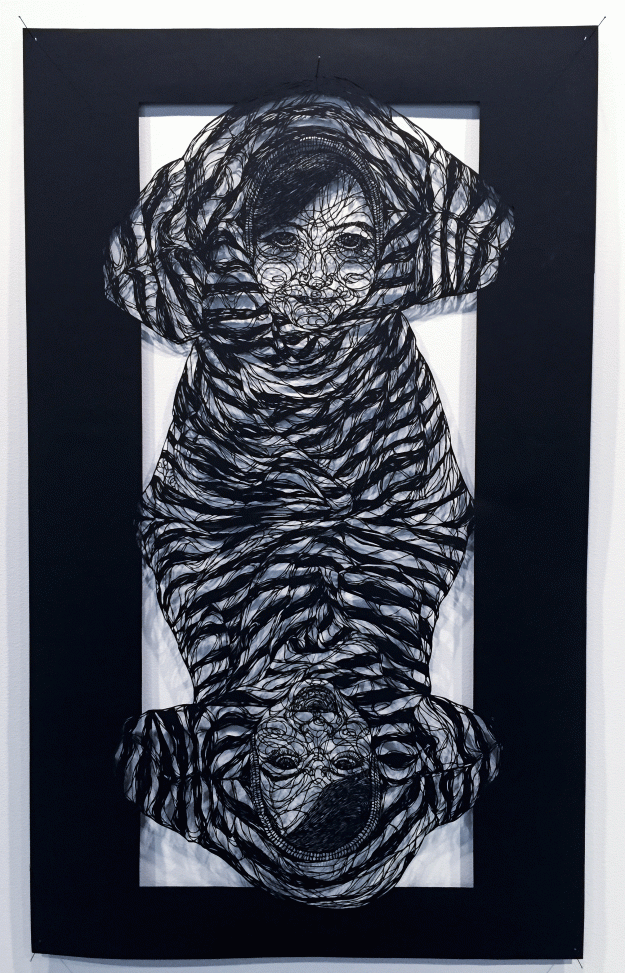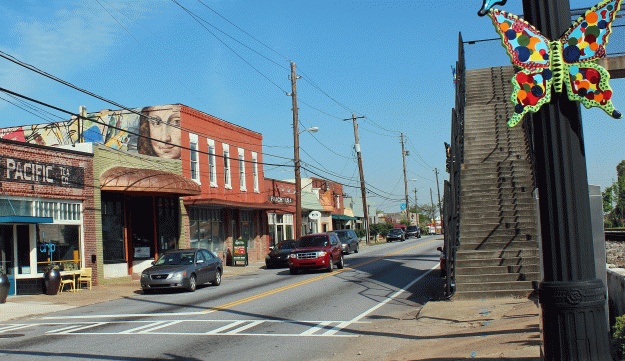Super convenient, super interesting art situation last night at Stanley Beaman Sears, an architecture firm in the heart of downtown Atlanta that hosts quarterly exhibits in its super fine space.
As explained by Burnaway, Steven Williams of Jacksonville’s Florida Mining gallery, who is the spitting image of Stanley Tucci in The Devil Wears Prada, brought three of his artists to Atlanta to give our city “a try.” Last night’s opening gathered the artists, Mr. Williams, and a compelling exhibit for a delicious, uncrowded, and memorable night of viewing.
Marcus Kenney gave an amusing talk about his work, and made himself accessible for chatting with all comers. The entertainment value of his work here is far higher than a Hollywood movie. Mr. Kenney’s resume is notably full, you collectors. He also shows his work at Marcia Wood Gallery.
Hiromi Moneyhun’s paper-cut works generated a lot of buzz in the gallery. Many viewers in attendance last night were architects who marveled at the extended concentration and perfectionism that Moneyhun’s work demonstrates. The conversation seemed never quite to reach the imagery that Moneyhun pursues, full of flowing hair and curvilinear garments.
Kedgar Volta’s video works stand on a firm set of ideas that Volta enjoyed discussing. The works on display are understated, stripped of color, and in this gallery, lacking sound. Better for you to visit Volta’s website and watch his work on your home system.
Not sure what we think about gathering all of these artists under the banner of “Southern artists,” though we advocate the South finally admitting the diversity inherent in its artists and art.




